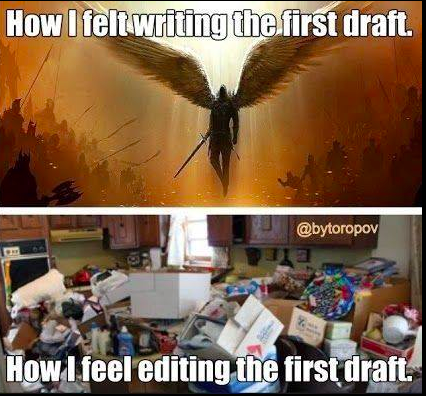
Once we have that crappy first draft usually there will be two major things we need to do…fill or cut. Okay, drinking makes three. And maybe wondering why we didn’t go to dental hygienist school instead makes four….
Anyway.
While it is true that too little substance can generate confusion, too much fluff can create distraction.
There needs to be a balance between…
Enough about the damn snowstorm! and Wait? There was snow?
Thus, once we have that completed first draft and begin our read-through we need to make these refinements to see if what we created meets or exceeds our expectations.
Sadly this is usually the first draft.

Much of what we will need to do is going to be dictated by what kind of writer we are. Are we a Trimmer or an Embellisher? There is a fantastic post over on Writer Unboxed that describes these two types of writers.
Some writers do a very sparse first draft that acts a lot like a frame for paper machet. It is really meant to just give an idea of the final form and serve as a guide.

Image via Flickr Creative Commons courtesy of Suzette.
Once the structure is inspected and found to be solid enough for government work, the writer then goes back through and fleshes in the work.
Other writers write super heavy then carve away what doesn’t serve the story.
And while I think all of us will identify with one type or another (Trimmer or Embellisher) it really helps to know what to add and/or what to cut.
If we add too much of the wrong thing, we can spoil the entire novel. If we cut too much of the right stuff we can collapse the story. Thus I hope today to at least give you some guidance beyond the more surface line-edit tips I’ve given before (6 Ways to Self-Edit and Polish Your Prose) though those are super helpful as well.
When I do a content edit for any writer, these are the main areas I am looking for.
What To Cut
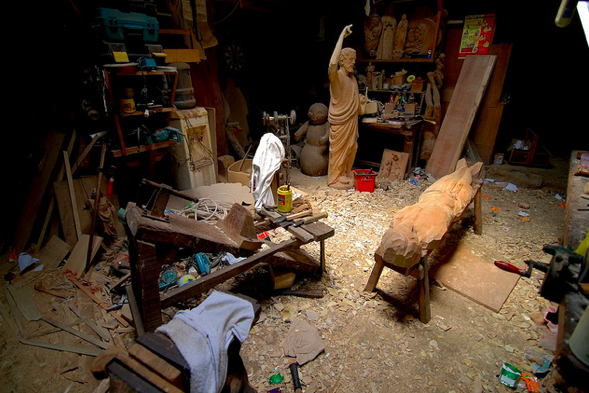
Image via Flickr Creative Commons, courtesy of Jojo Nicado
Character Redundancy
Each character should have a distinctive personality. This personality will give them a corresponding unique purpose to driving the story forward and generating conflict.
In Lord of the Rings the main story problem is of course created by Sauron (the whole evil ring thing). But, much of the story conflict is actually created by the cast members of the various parties who all have a specific role to play.
Merry and Pippin create a lot of chaos that generates sudden changes in the plan. For instance, the plan was to meet Gandalf at The Prancing Pony NOT to nearly fall into the Dark Rider’s lap outrunning a ticked off farmer.
The duo is naive, inquisitive and we can kind of bundle them into one because they are a team in their mischief. To have essentially another Merry and or Pippin type character would be a redundancy that would be a distraction.
Ask yourself then: Do I have any characters who could be merged?

Image via Flickr Creative Commons courtesy of Q Family
Scenes that Don’t Move the Story Forward
All scenes have one common element. Conflict. There is a goal. No goal and that isn’t a scene.
Sections of information dump, flashbacks that have no ties to the main plot problem/resolution, or scenes with no conflict (I.e. two characters merely talking about a third character)? CUT.
Lackluster Description
Many of us love description. I do. My motto? No metaphor left behind! But description can have two main problems. Either we have a lot of good description but it is SO much that it is bogging down the story. Or, we have description, but it isn’t anything remarkable and we need to replace it with something better.
Ideally, it will be description that goes below the surface and adds to the plot, sets the tone and heightens tension.
Description is more than a weather report or a police sketch.
He was tall and handsome with a chiseled chin and dark wavy hair and…
And he took your purse?
I love this line from the beginning of Prisoner of Hell Gate, which is a literary suspense and one of my favorite books. This description hooks me and sets my expectations:
Dampness prevails, as always, but at this time less from the river and more from the mugginess that weighs on everything. It penetrates the very bricks, their crumbling mortar spongy to the touch.
I don’t know about you, but I am practically wilting reading this. It works way better than:
She walked beside the river on a hot summer night.
Though obviously style will dictate how we write description, even lean writers use words that will give the most impact.
He was a boring man dressed in an off-the-rack suit.
Maybe, instead…
He was the kind of man whose face you forgot even while you were still speaking to him.
Good description is less about piling on details and more about evoking a feeling.
What to Add
Sense of Time and Place
Is this a modern story? Or one set back in time? Is there magic? Technology? What is the setting? Now drop in the details that ground us. Talking heads in a place we aren’t oriented in is jarring. If this is in the beginning of a book, often it will fail to hook.
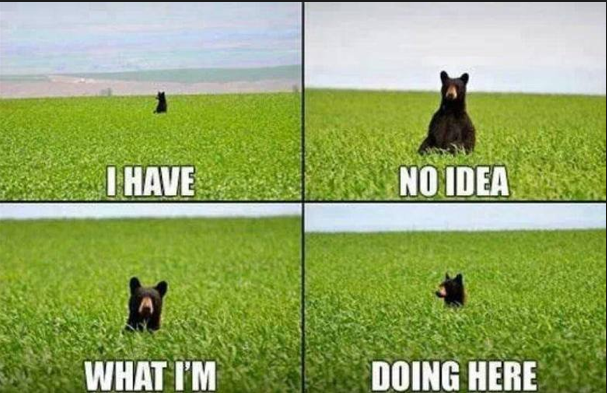
Character Nuance
If we just roughed out a bare-bones plot, we now need to go put the modeling clay on the skull.
Another one of my all-time favorite books is Rot & Ruin by Jonathan Maberry. Now in a parallel world maybe he just wrote out that he needed “a brash bounty hunter with a red car” then later built it into this:
“It was a 1967 Pontiac LeMans Ragtop. Bloodred and so souped-up that she’d outrun any damn thing on the road. And I do mean damned thing.”
That’s how Charlie Matthias always described his car. Then, he’d give a big braying horselaugh, because no matter how many times he said it, he thought it was the funniest joke ever. People tended to laugh with him rather than at the actual joke, because Charlie had a 72-inch chest and 24-inch biceps, and his sweat was a soup of testosterone, anabolic steroids, and Jack Daniels… (Page, 24)
We learned a lot about this character from a three-sentence bit of dialogue, some power-packed description and even some narrative regarding how others responded in the company of this particular character.
This is a really short section that does a lot. It even hints at what type of book this is…a book about zombies. If we happened to pick up this story with no book cover, we’d “get” what it was about.
More Conflict/Tension/Surprise
Great stories are about one thing and one thing only. PROBLEMS. Are our characters getting what they want too easily? Too quickly? Is their action toward each goal too linear? Are there enough stakes? Setbacks? Misdirections?
Are the characters’ actions too predictable? Can you maybe do better at defying reader expectations?

Are the characters acting as three-dimensional “people” who carry a lot of baggage? Or are they plot-puppets merely doing and saying things because we Author God need them to?
What are your thoughts? Does this help give you a plan of what to do with that first draft? Are you afraid of your office because your WIP might bite you and thus far refuses to be potty trained? What items do you look for? Can you add to the lists I gave?
I LOVE hearing from you!
To prove it and show my love, for the month of AUGUST, everyone who leaves a comment I will put your name in a hat. If you comment and link back to my blog on your blog, you get your name in the hat twice. What do you win? The unvarnished truth from yours truly. I will pick a winner once a month and it will be a critique of the first 20 pages of your novel, or your query letter, or your synopsis (5 pages or less).
Check out the other NEW classes below! Now including a log-line class! Can you tell me what your book is about in ONE sentence? If you can’t SIGN UP.
All W.A.N.A. classes are on-line and all you need is an internet connection. Recordings are included in the class price.
Upcoming Classes
Blogging for Authors (August 26th)
This class will teach you all you need to know to start an author blog good for going the distance. Additionally I would also recommend the class offered earlier that same week (August 22nd) Branding for Authors to help you with the BIG picture. These classes will benefit you greatly because most blogs will fail because writers waste a lot of time with stuff that won’t work and never will and that wastes a lot of time.
I am here to help with that 😉 .
Bullies & Baddies—Understanding the Antagonist September 2nd–September 2nd
All fiction must have a core antagonist. The antagonist is the reason for the story problem, but the term “antagonist” can be highly confusing. Without a proper grasp of how to use antagonists, the plot can become a wandering nightmare for the author and the reader.
This class will help you understand how to create solid story problems (even those writing literary fiction) and then give you the skills to layer conflict internally and externally.
Bullies & Baddies—Understanding the Antagonist Gold
This is a personal workshop to make sure you have a clear story problem. And, if you don’t? I’ll help you create one and tell the story you want to tell. This is done by phone/virtual classroom and by appointment. Expect to block off at least a couple hours.
Your Story in a Sentence—Crafting Your Log-Line
September 7th
Log-lines are crucial for understanding the most important detail, “WHAT is the story ABOUT?” If we can’t answer this question in a single sentence? Brain surgery with a spork will be easier than writing a synopsis. Pitching? Querying? A nightmare. Revisions will also take far longer and can be grossly ineffective.
As authors, we tend to think that EVERY detail is important or others won’t “get” our story. Not the case.
If we aren’t pitching an agent, the log-line is incredibly beneficial for staying on track with a novel or even diagnosing serious flaws within the story before we’ve written an 80,000 word disaster. Perhaps the protagonist has no goal or a weak goal. Maybe the antagonist needs to be stronger or the story problem clearer.
In this one-hour workshop, I will walk you through how to encapsulate even the most epic of tales into that dreadful “elevator pitch.” We will cover the components of a strong log-line and learn red flags telling us when we need to dig deeper. The last hour of class we will workshop log-lines.
The first ten signups will be used as examples that we will workshop in the second hour of class. So get your log-line fixed for FREE by signing up ASAP.
For those who need help building a platform and keeping it SIMPLE, pick up a copy of my latest social media/branding book Rise of the Machines—Human Authors in a Digital World on AMAZON, iBooks, or Nook.


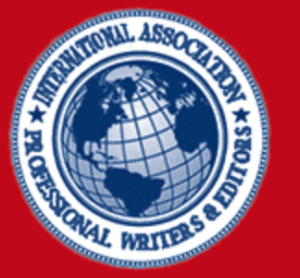

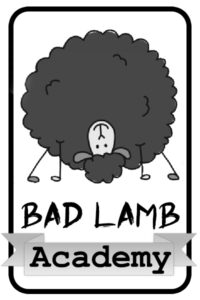
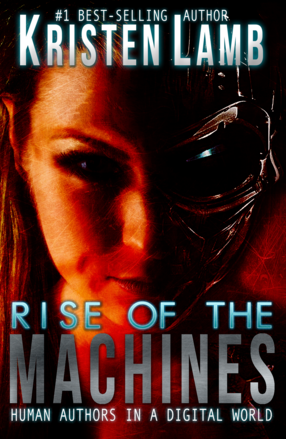


48 comments
4 pings
Skip to comment form
Reblogged this on ugiridharaprasad.
First draft revisions are hard. Harder for me than actually writing the book!
I am always amazed when someone finishes a book and breezes through this. My first draft is hanging together with paperclips and clothespins. It needs so much work, that the first revision can take me as long to do as writing the whole novel did!
While my first drafts tend to be skeletal, that doesn’t mean the bones are even in the right places or that I don’t have extra ones.
These were all great things to keep in mind while pulling out the analytical side during revisions. Especially the way to do description. I struggle with that. It’s fabulous, and I wish more of the books I read would describe likely that to help reinforce it.
It seems that once you get the first draft down, you could spend time making the scenes feel right, bring them to life. Even if the sections aren’t in the right places yet.
Reblogged this on Mirymom's Blog and commented:
I often enjoy Kristen’s blog posts about writing life, but this one spoke to me especially as I am in the middle of shaping a final draft out of the earlier mess I made.
The photos proclaim you have a delightful sense of humor, and your words an impressive knowledge of our craft. Thanks for sharing.
I realize I have a problem with “Character Redundancy”, but I love my three supporting characters too much to cut one out. I know, I know – “kill your darlings” but I’m basically a pacifist and not a particularly strong person to boot.
That you included this in your What To Cut shortlist, reinforces it’s importance. I’ve tried to change them up or merge without success, and suspect I’m going to have to get out my chainsaw.
Thanks for the push…
I’m going through my first draft right now and I tend to edit as I go (I know, I know, slap me now) so I have less to do with the first draft, it’s more a question of tightening it up and making sure it stays consistent. So I always make a character sheet as I go through, adding details or key points to it that I can then drop in or refer back to later in the book. That way I don’t have someone do something cool in chapter 3, but it’s never mentioned again!
Great stuff! I try to think of the rewrites as though I have to actually think about the story in different ways. Often we get married to certain prose and are reluctant to let it go. It helps to view the story differently – for instance, if it’s dialogue rather than thinking about the character speaking and how important it is for them to convey their message, think instead of the character they are speaking to. Do they understand what is being said? Do they have distractions? Do they already know the information? Any way we can get out of own head and out of that stuck feeling is going to be good for our writing. Particularly important when it comes to rewriting. As to editing, again we have to shift our perspective. Think in terms of the readers, or a publisher. Obviously we want this stuff in the story but be harsh with yourself on what you know someone else is going to want you to change or cut.
My first car was a 1967 ragtop Pontiac Firebird Le Mans, white with a red leather interior. Hippie wannabe, I’d plastered gigantic red and pink flower stickers all over it. I loved that car until the persistent oil leak dripped every last drop onto the 405 Freeway at 3 a.m., cracked the engine, and left me to walk home, where I lied to my parents about the circumstances of abandoning my car four miles away. They’d known about the oil leak, but not about how I’d spent my evening. Thanks for the fun memory. And the guide for editing my WIP.
Your title made me laugh out loud when I saw it in my inbox this morning. Also, “good description is less about piling on details and more about evoking a feeling” went up over my writing desk – well said!
Some great info here and a good guide on how to delete and add when going over that first draft. Thanks!!
Perfect timing with this post since I have a novel first draft stewing for a read-through in another week or so. I follow James Scott Bell’s advice from PLOT & STRUCTURE during my read-through and in revising or slashing scenes. I definitely draft trim (on emotion and description) so I generally ADD words on my first rewrite. Useless scenes get junked into a “cut scenes” file. Because no written word is completely worthless (or so I like to delude myself into believing since I bled them out in the first place).
I’m a trimmer. Now its time for me to flesh out my first draft. Thanks for the tips!
*sigh* Now you have me distracted from the 4579th revision of the WIP and thinking about the 1959 silver Bonneville with Tri-power. Built like a tank and hustled like a man on the make. Thanks for the distraction and the (as always) excellent advice!
I absolutely love this post. I’m only about 21.6k words into my first draft, and I am so intimidated by the editing process. I know I have a lot to eliminate, but also some scenes to embellish on. I’ve been following along for a while, and this blog seems to offer some of the best advice out there. I appreciate your humor but also your straightforward approach to writing. I need to remember it’s not just about description, it’s about the emotion it evokes. That is a handy tip.
Great post and very timely for me as I’m about to start editing the first draft. Think I@ll pin up your main points above my desk to remind me. Thank you.
“Good description is less about piling on details and more about evoking a feeling.” Great reminder. Thanks!
Reblogged this on Jeannie Hall Suspense and commented:
Help for new authors
My first draft was 40k, had zero humor, much angst, and little plot. Three years and 94 drafts later, it at least has humor and 45k more words. 😉
This is just what I needed–not that I’ve actually finished my first draft, but I’m nearing the finish line. I tend to underwrite so your tips about description are needed, and much appreciated.
I’m the kind who puts it all in in the first draft, and then has to cut huge amounts out. And then add bits to fix the structural problems, and…. Basically, my second draft isn’t an edit, it’s a rewrite. But I’ve learned a huge amount from this process (when will it ever end??) and I hope never to have to slog the long way round again.
I think my problem is that considering the years I’ve spent on this thing (or procrastinating on this thing, as the case may be) I feel it needs to justify itself by being really really good, and not just pretty good.
I know – I need to get on with it, finish it and ‘ship’. And then (o joy, o rapture!) move on to redrafting something else.
Very interesting post. I’ll be sure to come back and check out your additional posts. I recently started my own blog at lorioestreich.com and will be attacking my first full edit of my novel. Thank you for the informative article.
Ugh, I am definitely an Embellisher but I wish I were a Trimmer! I feel like there are more Trimmers out there because so much of the editing advice I read is geared towards them (i.e. it almost always talks about cutting scenes and description). It’s nice to read something focusing on a different perspective—one that actually applies to my writing. 🙂 😉
So, you write a sort of structure and then go back and flesh out out? That seems to be the more time-efficient of the two options.
It doesn’t *feel* efficient though when I reach the end and realize I have a ton of stuff to fill in. Maybe it’s just a case of the grass being greener, though! I wonder if Trimmers wish they didn’t write so much…
You nailed that feeling. First person? Third person? Internal narrative? So much work!
Still working on the first draft. Sometimes the prose flows and I feel good. Other times I’m writing to keep going, aware that I will have to come back later and make it beautiful. Those times it’s just laying out structure. I just gotta keep moving or I’ll never get anything done.
Reblogged this on Don Massenzio's Blog.
“Some writers do a very sparse first draft” that’s me! I had to learn about fleshing it out to add to the story while not detracting. 🙂 So, my suggestion for skeletal writers, like me, is to look for areas that you have summarize. Build it using all the info listed above.
PS: The description from Prisoner of Hell Gate, is pretty much how it has felt around these parts the last couple of days. UGH!
Perfect timing and wonderful advice. My first draft needs both trimming and adding. Thanks for such an informative post.
Thanks for the section about knowing about what kind of first draft writer you are. I have a friend who’s struggle with her first draft and I think it’s because she isn’t sure which kind she is so she struggles to know what to cut before she’s even finished! I think sharing this will help her with that. Thanks!
Reblogged this on Matthews' Blog.
I’m on my one-millionth draft and it still feels like the first draft. I guess that’s what it’s like working on a first novel!
Reblogged this on jackiperrette and commented:
I recently completed the first draft of a book so a friend shared this article with me. I figure these suggestions will give me a rope to hang onto as I try to wade through all the work that needs doing. I’m really excited to have finally gotten one of my stories to this point and feel encouraged that I can push more of my work over the first draft finish line.
Congratulations on getting a fitst draft!!!
Thanks for the practical pointers for what to focus on when beginning a subsequent draft. (Reblogged: https://jackiperrette.wordpress.com/2016/08/14/so-you-wrote-a-first-draft-dear-god-what-now/)
Perfect timing for me since I’m one chapter (I think) away from finishing a first draft that I know is going to need a lot of work. I’m someone who never finishes a novel, I abandon it because I’m continually thinking of ways to tweak it, improve a description or make a character more vivid. At some point I just need to decide “enough is enough” and leave it be. This one started out as a backstory to volume 2 of my tetralogy but since it’s coming in around 30,000 words, seems a bit more. Editing is going to be very interesting.
So many people (read that nonwriters or new writers) think that rewriting means proofreading, but as you point out here, the process requires so much more!
Late to the party again. I sit and re read everything, change a bunch, re read again … I do this for several weeks before I send it to the editor. I’m not looking at just the grammar or spelling, but does it make sense? Where does it fit? Who would read this? And so on … I made myself a list that I go by otherwise, I’m sure I would lose my mind.
Still trying to figure out which class of writer I am. But the tips were insightful to me. As I read them I could see parts in my story to which they applied. And having these tips makes the journey of finishing seem less intimating. Many thanks for dispersing your wisdom Kristen!
I love your opening meme. I actually did that this week. LoL!
I was beta reader for a writer who had 79 named characters. She had no idea until I pointed it out to her. Her story was built on a fictionalized version of her own life. Since she knew 79 people, she thought they all had to be in the story. The same thing happened with a second writer that I read for. Again, a story based on his actual experiences. This has made me very aware in my own writing to guard against duplicative or unnecessary characters. Good post, as always.
Kristen–you know what you’re talking about, and I know this to be true because I know what I’m talking about. Regarding your all-time favorite description from Prisoner of Hell Gate: love the first sentence, not so much the second. Here’s why: “It penetrates the very bricks, their crumbling mortar spongy to the touch.” The word “very” is unnecessarily quaint–“it penetrates the bricks” works just fine. “their crumbling mortar spongy to the touch.” Hm, I wonder. It’s possible “crumbling” and “spongy” are loading up the sentence with too many modifiers. I appreciate the assonance of crumbling, spongy, and touch, but maybe too much of a good thing?
Make no mistake, though. IMO, you are one of the brightest bulbs in the marquee. I hope you some day offer marketing services.
Author
Well that is an instance where I think we would edit the voice out. The description is a reflection of “voice” of the character, since the observations are processed through her lens. She is loquacious and that is juxtaposed next to a contemporary character who is more sparse and surgical in how she sees the words. Mary is Irish and a storyteller. She is dramatic and flamboyant. This is why we have to be careful over editing too.
And thank you for the compliment! 😀
Reblogged this on Erotic Vampire and commented:
Great coaching – thank you Kristen
As an editor myself, I find it nearly impossible to look at my own work critically. For the first time ever, I’m nearing the end of drafting my first novel manuscript (I’ve started several but never finished), and I think workshopping it is going to be the best option for me.
Reblogged this on Books and More.
Great advice and just when I need it! Now I’m off to find scenes that aren’t moving my story forward… and cutting back on snow storms ?
[…] Source: So You Wrote a First Draft—Dear God! What NOW? […]
[…] « So You Wrote a First Draft—Dear God! What NOW? […]
[…] So You Wrote a First Draft—Dear God! What NOW? – Kristen Lamb on what to look for as you edit that first draft. With lots of pictures. […]
[…] Show Notes So You Wrote a First Draft—Dear God! What NOW? […]